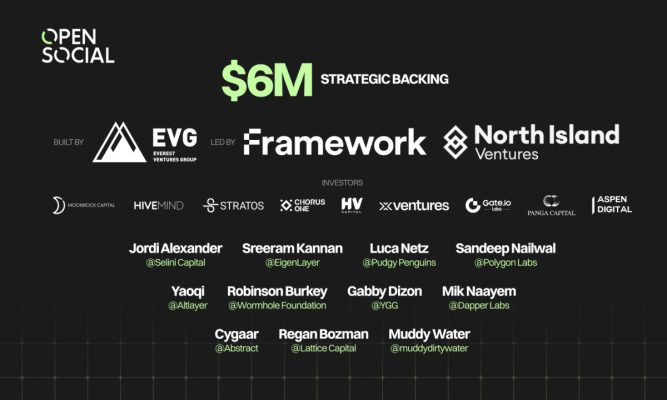In cryptocurrency mining, the choice of mining hardware plays a pivotal role in determining profitability and efficiency. As the blockchain industry continues to evolve, two prominent hashing algorithms have emerged as dominant forces: SHA-256 and Scrypt.
These algorithms form the foundation of mining operations for various cryptocurrencies, each with its own unique characteristics and considerations.
In this article, we will get into crypto mining hardware, focusing on comparing SHA-256 and Scrypt ASICs. We aim to give readers a deeper understanding of these two algorithm systems, shedding light on their differences, benefits, and potential challenges.
So, let’s dive deep into the world of SHA-256 and Scrypt ASICs and uncover the essential factors to consider when choosing your crypto-mining hardware.
Introduction in Scrypt vs SHA-256: The Basics
SHA-256 and Scrypt ASIC are the most used algorithm systems in cryptocurrency mining for authenticating blocks of transaction data that the developers of a given type of currency set.
Intuitively, SHA-256 ASICs are designed for the SHA-256 algorithm, which Bitcoin uses. They perform computations quickly and efficiently, ensuring secure and fast block verification.
Scrypt ASICs, on the other hand, are designed for the Scrypt algorithm used, for example, by Litecoin. Scrypt is a memory-intensive algorithm, and these ASICs are optimized to handle specific requirements.
Both types of ASICs help miners verify and secure transactions on the blockchain network, increasing the chances of earning rewards for their mining efforts.
How Do Scrypt vs SHA-256 Algorithms Work?
To understand which ASICs are better, you must first understand the two different hashing models, in our case, Scrypt and SHA-256. So, if you’re new to crypto, imagine you have a magical machine that can transform any word or sentence into a unique lock. This machine has two different modes: the SHA-256 mode and the Scrypt mode.
In SHA-256 mode, the machine processes your word or sentence through a series of complex mathematical operations. It mixes up the characters, rearranges them, and performs calculations based on their values. The result is a unique lock that is extremely difficult to reverse-engineer. This lock represents the original word or sentence, but nobody can look at the lock and figure out what it was without going through the same calculations.
In Scrypt mode, the machine has a different approach. It requires the word or sentence and a significant amount of memory to create the lock. It takes your input and stores it in a special memory bank, where it shuffles the characters around, mixes them up, and performs more calculations. This memory-intensive process creates a unique lock that is also difficult to crack but requires more resources to create and verify than the SHA-256 mode.
In both cases, the resulting locks are used to authenticate blocks of transaction data in cryptocurrencies. Miners use machines to perform these calculations quickly and efficiently. Once a block is authenticated, it becomes part of the secure chain of transactions, and the miner is rewarded for their efforts.
SHA-256
Between Scrypt vs SHA256 or vice versa, SHA-256 has a higher complexity of the two, used in Bitcoin and most currencies forked from its code. Processing block data is more time-consuming, resulting in transaction turnaround times being measured in minutes instead of seconds—but it’s said that it’s also more comprehensive and less susceptible to errors.
Proponents also claim it has better data security. Coin mining with SHA-256 can go so far to require even hash rates at the hundreds of TH/s range or higher, meaning that individual miners encounter difficulties producing a block. Those who do often use hardware for this type of mining set up the device to perform only mining operations.
Scrypt
Scrypt is a faster and simpler algorithm, and it has become a favorite among new digital currencies that are introduced into space. Scrypt can be easily run on a CPU, and it is less energy-consuming than SHA-256, making it a favorite of most individual miners.
Scrypt’s hashrates for generating new coins are usually situated in the kilohashes per second (KH/s) or megahashes per second (MH/s) ranges, which can be done using regular computers instead of ASICs or other specialized hardware.
Some dispute this more straightforward system can be affected more quickly by security issues since fast transaction turnaround times involve a less detailed investigation of the data on the system’s part. But so far, there have been no cases of real-world issues.
It is expected that in the future, hash difficulties for the more popular currencies that use the SHA-256 mining algorithm—such as Bitcoin—will increase, which will lead to the limitation of crypto mining to mining pools or industrial miners. Because of this, it’s expected that Scrypt-based cryptocurrencies will experience an increase in popularity based on their ease of mining.
Mining with a Scrypt vs SHA-256 ASIC: Comparison
Bitcoin uses the SHA-256 algorithm to generate hashes representing the data stored in blocks on the blockchain. As mentioned above, SHA-256 is more complex to run, meaning it’s highly accurate and secure but also slow. This is why ten minutes are required to generate only one block on the Bitcoin blockchain.
Mining using SHA-256 demands a high hashrate use, and because of it, miners must employ dedicated hardware rather than a GPU, as it produces higher hashrates.
By 2011, miners had transitioned to customizable hardware, known as Field Programmable Gate Arrays (FPGAs), to direct additional computing power into mining. After the first ASIC was released in 2013, mining became an operation at the industrial level, and by 2014, ASICs started dominating the Bitcoin mining market.
The Scrypt algorithm was first introduced by Litecoin’s developers in 2011. At that moment, the algorithm was considered to be resistant to the newer mining hardware that was being used for Bitcoin mining.
As Scrypt is a less complex algorithm and requires a lower hashrate, Litecoin’s block generation time is only two and a half minutes.
However, Scrypt requires more memory resources than SHA-256. The hardware accessible at the time of Litecoin’s release couldn’t mine Scrypt. Even as ASICs emerged in 2013, they were made for SHA-256 deployment. Because of this, GPUs were used exclusively to mine Litecoin for a brief period of time.
But this era was short-lived, as, in 2014, ZeusMiner released its first Scrypt ASIC. Currently, both SHA256 and Scrypt ASIC hardware markets are served by many brands, but one of the most popular in both is the Bitmain mining giant.
Scrypt vs SHA-256: Coins Algorithm
Coins that Use the Scrypt Algorithm

Some examples of coins that employ the Scrypt algorithm are:
- Litecoin;
- Dogecoin;
- Monacoin;
- Syscoin;
- Viacoin.
At the time of writing, more than 154 coins use the Scrypt algorithm.
Coins that Use the SHA-256 Algorithm

Some examples of coins that use the SHA-256 algorithm are:
- Bitcoin;
- Bitcoin Cash;
- Bitcoin SV;
- Namecoin;
- Litecoin Cash;
- Unobtanium.
At the time of writing, more than 46 coins use the SHA-256 algorithm.
Scrypt vs SHA-256: Best ASICs for Each Algorithm
Now that you have a piece of basic knowledge, based on our research, we will present an ASIC model for each algorithm (the best ASICs for each).
The Best ASICs for Scrypt Coins: Antminer L7 (9.5Gh/s)

Based on our research, the best ASIC for Scrypt coins is the Bitmain Antminer L7 (9.5Gh/s). It consumes a maximum of 3425W, and this miner boasts impressive performance. Since its release in November 2021, it has garnered significant attention in the market.
The Antminer L7’s high power consumption of 3425W translates into increased productivity, allowing for faster mining of supported coins compared to other Scrypt algorithm miners. With a commendable efficiency rating of 0.361j/Mh, the miner incorporates four fans for efficient cooling during prolonged mining sessions, mitigating overheating concerns.
Featuring a maximum hashrate of 9.5 Gh/s or 9500Mh, the Bitmain Antminer L7 is a formidable mining machine. Leveraging Bitmain’s reputation for manufacturing robust hardware, the L7 delivers a high hashrate that guarantees fruitful mining sessions.
Pros of the Bitmain Antminer L7 (9.5Gh/s)
- High hashrate;
- Power efficiency;
- Established brand;
- Reliable cooling system;
- Compatibility with various crypto coins;
- Scalability.
Cons of the Bitmain Antminer L7 (9.5Gh/s)
- High initial investment cost;
- Limited availability;
- Noise level;
- Regular maintenance requirements;
- Power consumption.
The Best ASICs for SHA-256 Coins: Antminer S19 XP (140Th)

Based on our research, the Antminer S19 XP stands out as the top choice among ASIC miners specially created for the SHA-256 algorithm. This high-performance mining machine has been meticulously designed to elevate your crypto-mining endeavors.
Setting itself apart from other Bitmain miners, the Antminer S19 XP boasts a sleek, refined design that optimizes cooling efficiency. This model ensures enhanced cooling by strategically positioning all fans alongside each other, leading to improved overall performance.
This model is renowned for its robust security measures and accelerated block puzzle-solving capabilities, and this algorithm offers superior resistance against pre-image and second pre-image attacks, as well as collision resistance. It has earned a well-deserved reputation and widespread trust within the industry.
With a maximum hashrate of 140 Th/s, the Antminer S19 XP enables swift and efficient block puzzle solving, even amid escalating mining difficulties. This exceptional hashrate and the miner’s robust power capacity ensure optimal performance and maximize mining profitability.
Pros of the Antminer S19 XP (140Th)
- High hashrate, enabling efficient mining operations;
- Established and reliable brand;
- Durability for long-lasting performance;
- Compatibility with a wide range of crypto coins;
- Effective cooling system to prevent overheating.
Cons of the Antminer S19 XP (140Th)
- A high initial investment is required;
- Noise level;
- Power consumption;
- Availability and scalability.
For a more comprehensive list of the best ASICs for mining, you can check out our specially tailored article on this subject.
FAQ
What is Scrypt?
Scrypt is a cryptographic algorithm created by Colin Percival. It is specifically designed to prioritize memory usage over computational power. This makes it difficult for attackers to launch precomputation attacks and reduces the advantage of using specialized hardware like ASICs.
What is SHA-256?
SHA-256 is a widely used cryptographic hash function that is designed to prioritize computational power over memory usage, commonly employed in applications like Bitcoin mining. It plays a crucial role in the Proof-of-Work consensus mechanism used by Bitcoin. One of its key advantages is its high level of security compared to other hash functions. It is particularly resistant to collision attacks and preimage attacks, which enhances the overall security of systems utilizing SHA-256.
Conclusion
So, embarking on a mining venture demands diligent research, especially when it comes to purchasing hardware like SHA-256 or Scrypt ASICs. Given the current state of the market, the likelihood of generating significant profits through mining is relatively low, and it may take considerable time before you begin to see a return on your investment.
Nevertheless, we trust that our article comparing SHA256 and Scrypt ASICs has provided valuable insights into the distinctions between these two algorithm systems.
Armed with this knowledge, you can make more informed decisions and navigate the mining landscape more confidently. Staying informed and mindful of the evolving market conditions will be key to optimizing your mining endeavors.

